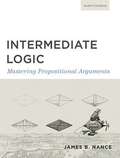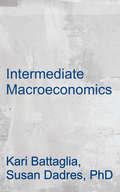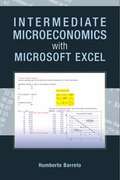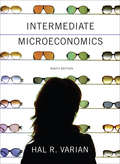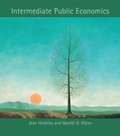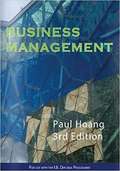- Table View
- List View
Intermediate First Year History Text Book English Medium - Telangana Board
by G Anjaiah Dr Srinivas Vaddanam Dr J. Krishna Prasad Babu Dr L. R. Mohan Kumar Reddy Sri Balagonda Gangadhar Sri N John Babu Smt C.Leela Sridevi P. MuraliThis is the prescribed text book for the subject of History to the students of Intermediate first year English medium in the state of Telangana.
Intermediate First Year Second Language Telugu Text Book - Andhra Pradesh Board
by R Vasunandan V Chandrasekhar Reddy P Vijay Kumar T Pramod Kumar K Krishtappa R Sumathi Devi N Seshu BabuThis is the prescribed text book for Intermediate First Year Second Language Telugu in Andhra Pradesh
Intermediate First Year Telugu Medium History Text Book - Andhra Pradesh Board
by Srinivas V Iln Chandrasekhar G Anjaiah B Gangadhar Lr Mohan Kumar J Krishna Prasad P MuraliThis is the prescribed text book for History subject to the students of First Year Intermediate Telugu Medium in Andhra Pradesh Board
Intermediate Language Skills: A Student Guide (3rd Edition)
by K12An intermediate language skills guide for all students.
Intermediate Logic: Mastering Propositional Arguments (Third Edition)
by James B. NanceThis text is designed as a continuation to Introductory Logic, which I co-authored with Douglas Wilson. Together, these two textbooks should provide sufficient material for a complete course in elementary logic.
Intermediate Mathematics: A Student Guide
by K12A comprehensive student guide through Intermediate Mathematics.
Intermediate Microeconomics A Modern Approach (8th Edition)
by Hal R. VarianHal R. Varian’s Intermediate Microeconomics: A Modern Approach stands as a cornerstone in economic education, offering a clear, analytical, and modern framework for understanding how markets function and individuals make decisions. The book systematically introduces students to core microeconomic concepts such as consumer behavior, production theory, market structures, general equilibrium, welfare, and game theory. It emphasizes logical reasoning and model-building while maintaining accessibility by minimizing mathematical barriers, making complex ideas comprehensible through graphical and algebraic methods. Varian integrates real-world examples—ranging from housing markets and auctions to contemporary topics like carbon taxes, network externalities, and online marketplaces—to illustrate how microeconomic theory applies to practical issues. Each chapter is concise, designed to fit within a single lecture, and supported by a companion workbook for problem-based learning. Balancing rigor with clarity, Varian’s approach nurtures economic intuition while fostering analytical skills essential for applied economic analysis. Widely adopted across universities worldwide, this edition refines classic microeconomic principles with updated discussions on behavioral economics, mechanism design, and market efficiency, reaffirming its reputation as both a comprehensive learning tool and a reference guide for students, instructors, and practitioners in the field of economics.
Intermediate Microeconomics With Microsoft Excel
by Humberto BarretoThis unique text uses Microsoft Excel® workbooks to instruct students. In addition to explaining fundamental concepts in microeconomic theory, readers acquire a great deal of sophisticated Excel skills and gain the practical mathematics needed to succeed in advanced courses. In addition to the innovative pedagogical approach, the book features explicitly repeated use of a single central methodology, the economic approach. Students learn how economists think and how to think like an economist. With concrete, numerical examples and novel, engaging applications, interest for readers remains high as live graphs and data respond to manipulation by the user. Finally, clear writing and active learning are features sure to appeal to modern practitioners and their students. The website accompanying the text is found at www.depauw.edu/learn/microexcel.
Intermediate Microeconomics: A Modern Approach Ninth Edition
by Hal R. VarianRigorous and modern―the #1 text for Intermediate Microeconomics from the chief economist at Google. This best-selling text is still the most modern presentation of the subject. The Varian approach gives students tools they can use on exams, in the rest of their classes, and in their careers after graduation.
Intermediate Public Economics
by Jean Hindriks Gareth D. MylesPublic economics studies how government taxing and spending activities affect the economy--economic efficiency and the distribution of income and wealth. This comprehensive text in public economics covers the core topics market failure and taxation as well as recent developments in the political economy and public choice literatures. It is unique not only in its broad scope but in its balance between public finance and public choice and its combination of theory and relevant empirical evidence. After introducing the theory and methodology of public economics and reviewing the efficiency of the competitive equilibrium, the book presents a historical and theoretical overview of the public sector. It then discusses departures from efficiency, including imperfect competition and asymmetric information; issues in political economy, including rent-seeking (a topic often omitted from other texts); equity; taxation issues, including tax evasion and its consequences; fiscal federalism and tax competition among independent jurisdictions; and the intertemporal issues of social security and economic growth. This text introduces the reader to the theory of public economics and the most significant results of the analysis, providing an overview of the current state of the field. It is accessible to anyone with a background of intermediate microeconomics and macroeconomics and can be used in advanced undergraduate as well as graduate courses. Although the mathematics has been kept to a minimum, the book remains analytical rather than discursive. Annotated suggestions for further reading and numerous exercises are included at the end of each chapter.
Intermediate Second Year Civics English Medium - Telangana Board
by Sri P. Venkataramana Dr S. Yadagiri Sri V.Venkata Ramana Chary Dr S. Sushmitha Dr K. Saibaba Sri K. Mallesham Sri. T. Yadagiri R. Bhramara SreeThis is the prescribed textbook for Intermediate second-year students for the subject of Civics in English Medium.
Intermediate Second Year Civics Telugu Medium - Telangana Board
by P Venkata Ramana K Mallesham Tadka Yadagiri Dr Kuravi Saibaba V Venkata Ramana Chari Harthi Nageshan S SushmithaThis is the presrcibed text book for Civics (Poura Saastram) for Second year Intermediate Telugu medium students under Telangana Board
Intermediate Second Year Economics English Medium - Telangana Board
by Telangana State Board of Intermediate EducationThis is the prescribed text book for Economics subject in English medium for the Intermediate second year students of Telangana board
Intermediate Second Year Economics English Medium - Telangana Board
by Telangana State Board of Intermediate EducationThis is the prescribed text book for Economics subject in English medium for the Intermediate second year students of Telangana board
Intermediate Second Year English Text book - Andhra Pradesh Board
by Andhra Pradesh Board of Intermediate EducationThis is the prescribed text book for students of Intermediate second year for the subject English in Andhra Pradesh
Intermediate Second Year Geography Telugu Medium - Telangana Board
by Sri L. Ashok Kumar Sri Bora Harikrishnababu N. ChandraiduThis is the presrcibed text book for the subject of geography to the students of Intermediate second year - Telugu Medium in Telangana state
Intermediate Second Year HISTORY English Medium - Telangana Board
by Dr G. Anjaiah Dr S. Anjaiah Dr P. Ramesh Dr Aruna Pariti Dr B. Sudhakshana Dr P. Murali Sri K. Kishan Reddy Dr Srinivas Rao Vaddanam Dr Hema Subrahmanian K. PaandaiahThis is the prescribed text book for the students of Intermediate second year in the state of Telangana for the subject of History
Intermediate Second Year Telugu Text Book - Andhra Pradesh Board
by P Vijay Kumar R Sumathi Devi R Chandrasekhar Reddy M Bagaiah Dr T Pramod Kumar Dr K Anand Rao Dr B Sundar Rao Dr N Seshu BabuThis is the prescribed text book for Telugu subject in Andhra Pradesh Board Intermediate Second Year.
Intermediate Second Year Telugu Text Book - Telangana Board
by Acharya Banna IlaiahThis is the prescribed text book for the second year Intermediate Telugu - Second laguage subject for the students of Telangana Board
Intermediate World History A: Student Pages (Semesters 1 & #2)
by K12An edition that provides students worksheets and assessments on world history
Intern to a Monster (Fountas & Pinnell Classroom, Guided Reading)
by Jackie Parker Eoin CoveneyNIMAC-sourced textbook. A DREAM IN DANGER. Rudi's job as junior intern on a movie set is his first step toward the life of his dreams—being a screenwriter himself. But the star of the movie is threatening to stop Rudi's career dead in its tracks—before it even gets started.
International Baccalaureate Business & Management (Second Edition)
by Paul HoangThis book follows the format of the IB Business & Management syllabus (first examination in 2009). It is a dedicated text for both the Standard Level (SL) and Higher Level (HL) courses.
International Baccalaureate Business and Management
by Paul HoangThis book follows the format of the IB Business Management syllabus (first examination in 2016). It is a dedicated text for both the Standard Level (SL) and Higher Level (HL) courses. Units and sections that only apply to HL students are clearly highlighted. The textbook contains 210 examination-style questions. Case studies from around the world have been used in these questions to signify the international nature of IB Business Management. There are 90 examination tips that appear throughout the text. Over 125 Theory of Knowledge questions are integrated in the text. 55 IB Learner Profile connections are also included as part of the IB teaching and learning pedagogy.
International Business
by Mason A. Carpenter Sanjyot P. DunungInternational Business is one of the most challenging and exciting courses to teach in the Business School. To teach a current, dynamic and complete course you need a textbook by authors as passionate and informed about International Business as you are. Carpenter and Dunung's International Business: The Opportunities and Challenges of a Flat World provides exploration into building, leading, and thriving in global organizations in an increasingly flat world. The authors define "Flat world" as one where (1) service industries that dwarf manufacturing industries in terms of scale and scope, (2) an Internet that pervades life and work, and (3) networks define modern businesses, whether service or manufacturing. Carpenter and Dunung's text is designed to speak to technologically-savvy students who see national borders as bridges and not barriers. The authors use the lexicon of international business, and additionally, develop students' knowledge of international contexts with the aim that they may launch, run, and work in any organization that is global in scope (or is wrestling with global competition or other global threats)

